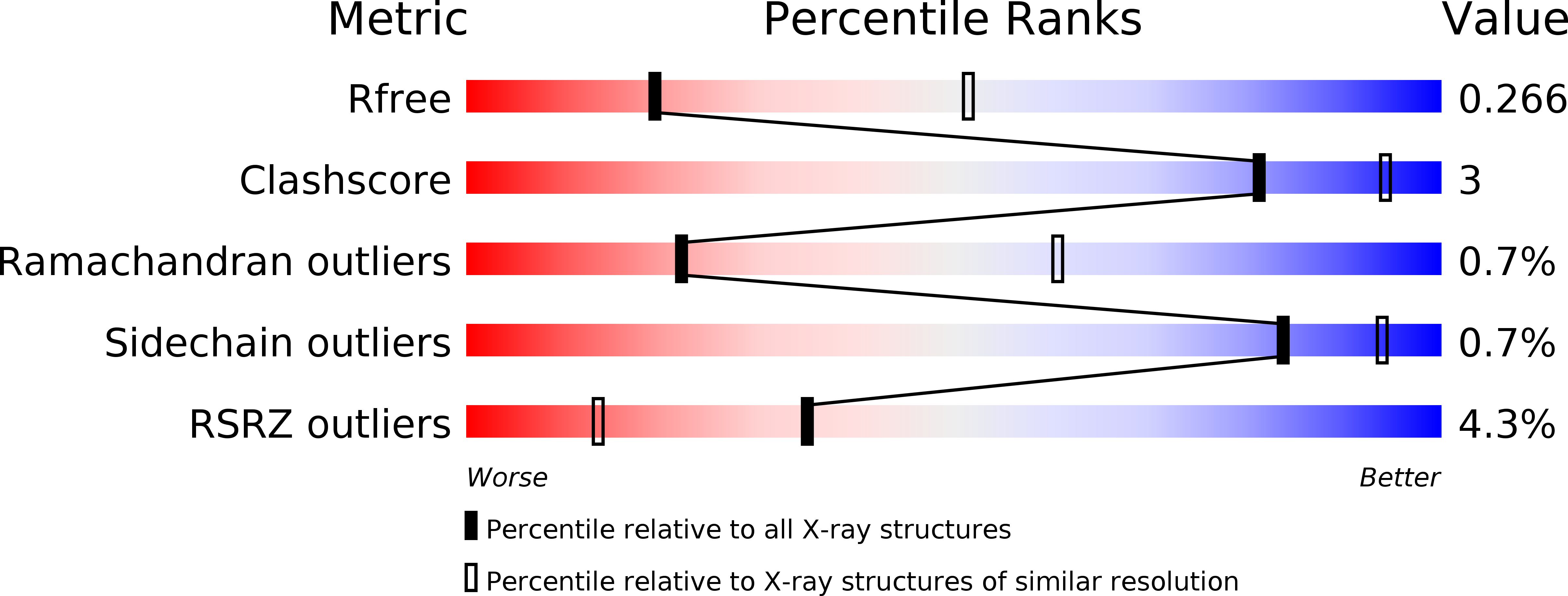Molecular Basis for Sialic Acid-dependent Receptor Recognition by the Plasmodium falciparum Invasion Protein Erythrocyte-binding Antigen-140/BAEBL.
Malpede, B.M., Lin, D.H., Tolia, N.H.(2013) J Biol Chem 288: 12406-12415
- PubMed: 23508963
- DOI: https://doi.org/10.1074/jbc.M113.450643
- Primary Citation of Related Structures:
4JNO - PubMed Abstract:
Plasmodium falciparum erythrocyte invasion is dependent on high affinity recognition of sialic acid on cell surface receptors. The erythrocyte binding-like (EBL) family of invasion ligands mediates recognition of sialic acid on erythrocyte glycoproteins. Erythrocyte-binding antigen-140 (PfEBA-140/BAEBL) is a critical EBL ligand that binds sialic acid on its receptor glycophorin C. We present here the crystal structure of the two-domain receptor-binding region of PfEBA-140 in complex with a glycan containing sialic acid. The structure identifies two glycan-binding pockets unique to PfEBA-140 and not shared by other EBL ligands. Specific molecular interactions that enable receptor engagement are identified and reveal that the glycan binding mode is distinct from that of apicomplexan and viral cell surface recognition ligands as well as host immune factors that bind sialic acid. Erythrocyte binding experiments elucidated essential glycan contact residues and identified divergent functional roles for each receptor-binding site. One of four polymorphisms proposed to affect receptor binding was localized to a glycan-binding site, providing a structural basis for altered erythrocyte engagement. The studies described here provide the first full description of sialic acid-dependent molecular interactions at the P. falciparum erythrocyte invasion interface and define a framework for development of PfEBA-140-based therapeutics, vaccines, and diagnostics assessing vaccine efficacy and natural immunity to infection.
Organizational Affiliation:
Department of Molecular Microbiology, Washington University School of Medicine, St Louis, Missouri 63110, USA.















